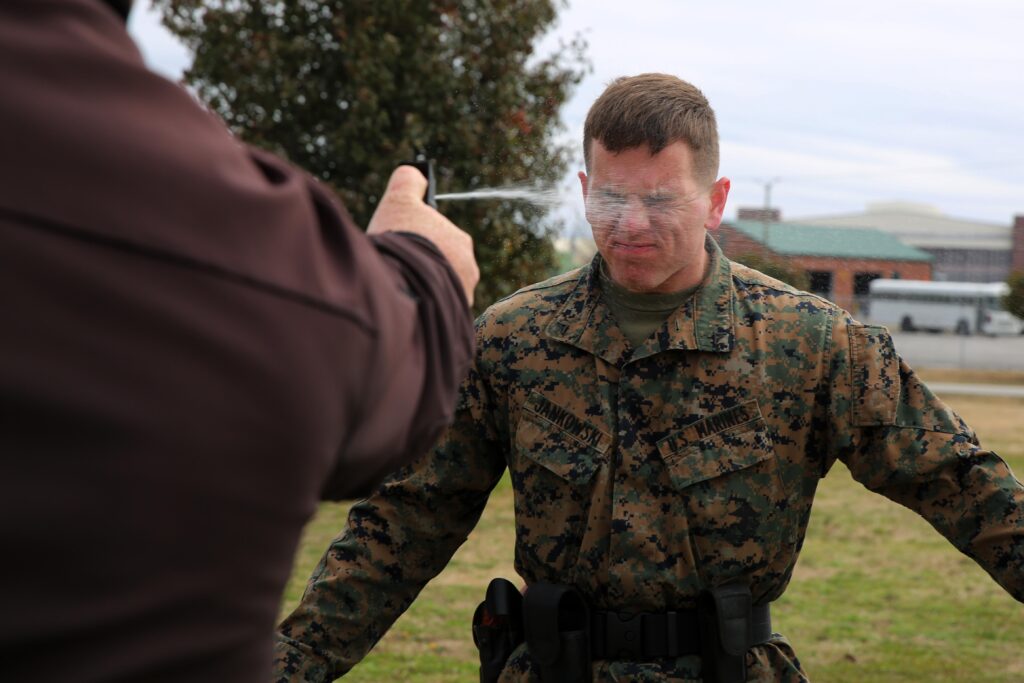Table of Contents
- Understanding the Causes Behind Pressure Loss in Pepper Spray
- The Safety and Effectiveness Risks of Using Low-Pressure Pepper Spray
- Steps to Take When Your Pepper Spray Is No Longer Discharging Properly
- Choosing the Right Pepper Spray to Ensure Consistent Pressure and Reliability
- Future Outlook
Understanding the Causes Behind Pressure Loss in Pepper Spray
Several factors contribute to the unexpected reduction in pressure within a pepper spray canister, directly affecting its effectiveness when you need it most. One of the primary causes is improper storage conditions. Exposure to extreme temperatures-whether freezing cold or scorching heat-can cause the propellant gas inside to expand or contract, leading to pressure imbalances. Over time, this can weaken the spray mechanism, resulting in a less forceful discharge. Additionally, physical damage to the nozzle or the canister itself, such as dents or cracks, creates tiny leaks that reduce internal pressure and compromise spray performance.
Another pivotal aspect to consider is the natural degradation of the propellant and active ingredients. Over prolonged periods, the chemical composition inside the canister may break down, especially in older or expired units. The seal integrity also plays a crucial role; worn-out seals allow gas to escape slowly, contributing to pressure loss. To safeguard your pepper spray’s reliability, it’s critical to perform regular checks for signs of damage and expiration. Keep in mind the following:
- Store in a cool, dry place away from direct sunlight
- Avoid dropping or excessive handling of the canister
- Inspect seals and nozzles periodically for wear or residue buildup
- Replace the spray according to the manufacturer’s recommended shelf life
The Safety and Effectiveness Risks of Using Low-Pressure Pepper Spray
When pepper spray operates under low pressure, its ability to incapacitate threats diminishes significantly. A spray with insufficient force may fail to reach the target effectively, lowering its deterrent value and leaving you vulnerable. Additionally, the spray’s dispersion pattern becomes unpredictable, which not only affects how the substance lands on an attacker but also increases the risk of blowback-where the spray unintentionally impacts the user or bystanders, creating a hazardous situation.
Critical risks to be aware of include:
- Reduced range, making it harder to create a safe distance between you and the threat.
- Uneven application, compromising the immediate effectiveness of the active ingredients.
- Potential for device malfunction, leading to a false sense of security.
- Increased exposure to your own face from unpredictable spray patterns.
Understanding these risks is essential to ensuring your personal safety tools are reliable. Regularly checking the canister’s pressure and replacing expired or faulty units prevents these dangers, maintaining the spray’s full protective potential.
Steps to Take When Your Pepper Spray Is No Longer Discharging Properly
If your pepper spray fails to discharge properly, it’s crucial to address the issue promptly to ensure your safety. First, inspect the canister for any visible damage or corrosion, which can compromise the spray mechanism. Sometimes debris or dirt can block the nozzle, so use a clean cloth or a small pin to gently clear any obstruction. Avoid shaking or dropping the canister as this might further affect its pressure. Keep in mind that most pepper sprays have a shelf life, usually between 2 to 4 years, after which the propellant may weaken, causing a weak or non-existent spray. If the product is expired, it’s best to replace it entirely rather than trying to fix it.
After visual and functional checks, consider performing a quick test spray in a safe, well-ventilated area to gauge the dispenser’s strength. If the spray is weak or inconsistent, avoid relying on it for defense, and transfer to a backup protection method immediately. Always store your pepper spray in a cool, dry place away from direct sunlight to maintain its pressure and effectiveness. If repeated failures occur, reach out to the manufacturer or seller for guidance or warranty claims. Remember, your personal safety gear must be dependable at all times, so never hesitate to replace malfunctioning devices promptly.
Choosing the Right Pepper Spray to Ensure Consistent Pressure and Reliability
When selecting pepper spray, focusing on models that guarantee consistent pressure from the first spray to the last is crucial. Inconsistent pressure not only diminishes the spray’s range but also compromises its effectiveness during critical moments. Opt for canisters with pressurized propellant systems designed to maintain steady output and avoid those relying on pump or aerosol mechanisms prone to pressure drops over time.
Additionally, consider sprays featuring:
- Durable seals and valves that prevent leaks and maintain canister integrity
- Clear pressure indicators that inform you when the spray is running low
- Reliable nozzle design to ensure a focused, consistent spray pattern without clogging or sputtering
Prioritizing these features supports a dependable defensive tool capable of performing reliably whenever you need it most.
Future Outlook
In conclusion, understanding what happens when your pepper spray loses pressure is crucial for ensuring your personal safety. Regularly checking the canister’s condition, knowing the signs of decreased effectiveness, and having a backup plan can make all the difference in an emergency. Remember, your pepper spray is only as reliable as the care you give it. Stay informed, stay prepared, and stay safe out there.Check Our Other Blogs
- StunGun – Your Trusted Source for Stun Guns, Laws, and Self-Defense Tips
- PepperSprayLaws – Your Trusted Resource for Pepper Spray Information
- StunGunLaws – Your Trusted Guide to Stun Gun Legality and Safety




